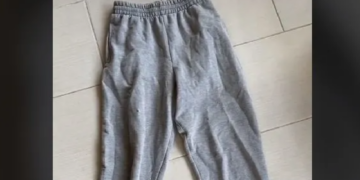Ceiling fans are one cool invention — pun intended.
They help circulate the cold air in your home during the scorching hot summer months . They even save you on heating costs during the frigid months of winter !
But none of these benefits are possible if you’re not using them correctly. So in today’s lesson of Things We Didn’t Know! you’re about to be blown away by the fact that ceiling fans change directions!
Don’t be fooled by the outdated look of ceiling fans. You’ll be a fan of them after learning about the many benefits!

To start off, if you’ve ever set the fire alarm off accidentally when cooking (hey, it happens), a ceiling fan can help blow away the smells of cooking and smoke.
You want to set the ceiling fan to turn clockwise in order to do this, according to Real Simple .
Then, open windows to help smoke leave the house.

This next benefit is a major help during the summer months! If you’re sick and tired of pesky mosquitoes biting at your skin, a ceiling fan is a natural repellant!
Simply run your ceiling fan counterclockwise on high and breeze helps keep mosquitos away.
That’s not the only benefit to gain during the summer months.
It will also save you big time from the scorching heat if you’re using the ceiling fan properly.
See, instead of watching, frustrated, as the ceiling fan blows hot air around, there’s a simple trick to get it working properly.
That is to change the direction of your ceiling fan to turn counterclockwise in the summer.

This will create a downdraft, which pushes cooler air from the AC down toward you. Doing so will save you big on energy costs on the summer since the AC won’t have to work so hard. Now, the ceiling fan will properly circulate that cold air.
Just be sure to turn off the ceiling fan when you’re out of the house to save on power.

Since you probably didn’t know that your ceiling fan had a switch to change directions, now’s the time to learn how to change it. Note: instructions differ depending on the model .
For example, you can use a remote or app on some high-tech ceiling fans to change the direction.
For the most basic ceiling fans, you will find the switch on the side of the fan. Just make sure the fan is completely turned off before you touch it!
The surprises don’t stop there.
You want to get the right angle of your ceiling fan blades as well. According to Save On Energy , they should be set to a minimum of 12 degrees for maximum chill.
You can adjust them larger than 12 degrees, but anything above 16 may cause loose objects around your home to blow around.
Shifting seasons here, you should also be using your ceiling fan during the winter!

Since warm air rises, reversing the direction of the fan in the wintertime actually keeps the warm air down.
This sets it to a level where people are gathering. So, what direction should you change the fan to?
Clockwise!
By running the ceiling fan clockwise at a low speed, it will move the warmer air from your heater or fireplace back toward you.
This should help reduce your heating costs, which can quickly add up during the cold months.
If you do this consistently, you should be able to reduce your heating bill by up to 15 percent!
If your home doesn’t already have a ceiling fan, you’re probably eager to run out and get your own.

If so, there are a few things to know. First, you need to know that ceiling fans are only safe in rooms with eight-foot ceilings or higher. This is important for safety, according to Bob Villa .
Second, you want your blades to hang 10 to 12 inches below the ceiling for maximum efficiency.

If you can do this, plus change the direction of the ceiling fan depending on the season, you’ll well on your way to a happy home 365 days out of the year!

















































